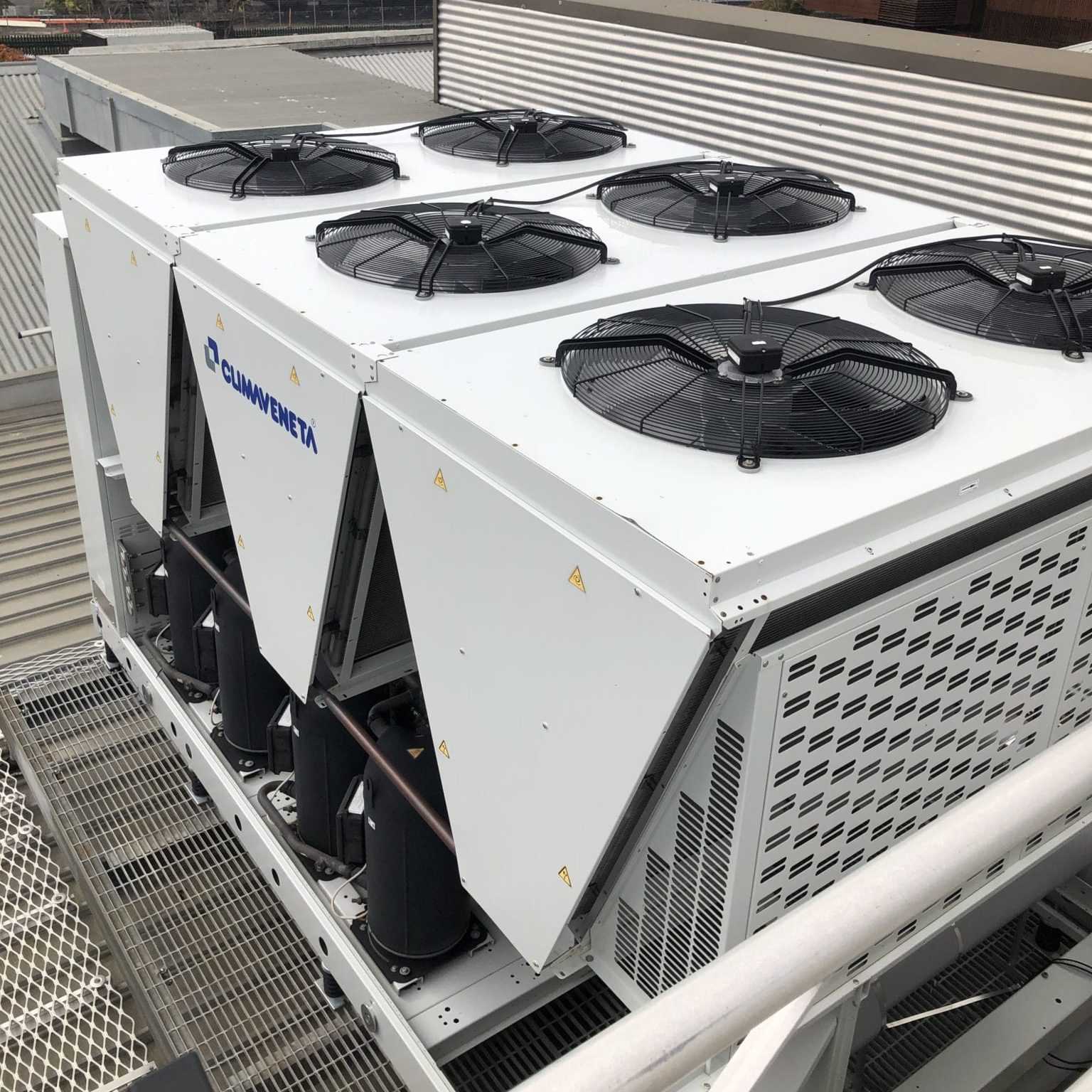
Image credit: Roof top air conditioning unit. Latrobe Regional Gallery.
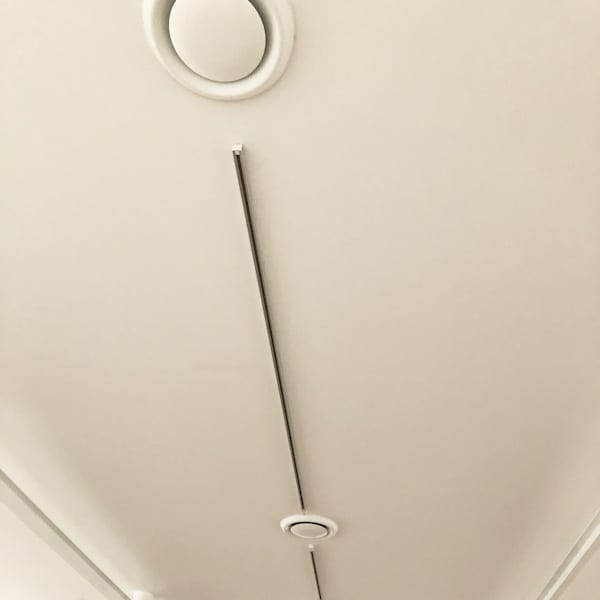
Image credit: Air Conditioning vents in Gallery 4. Latrobe Regional Gallery.

Image credit: Plant room Latrobe Regional Gallery.
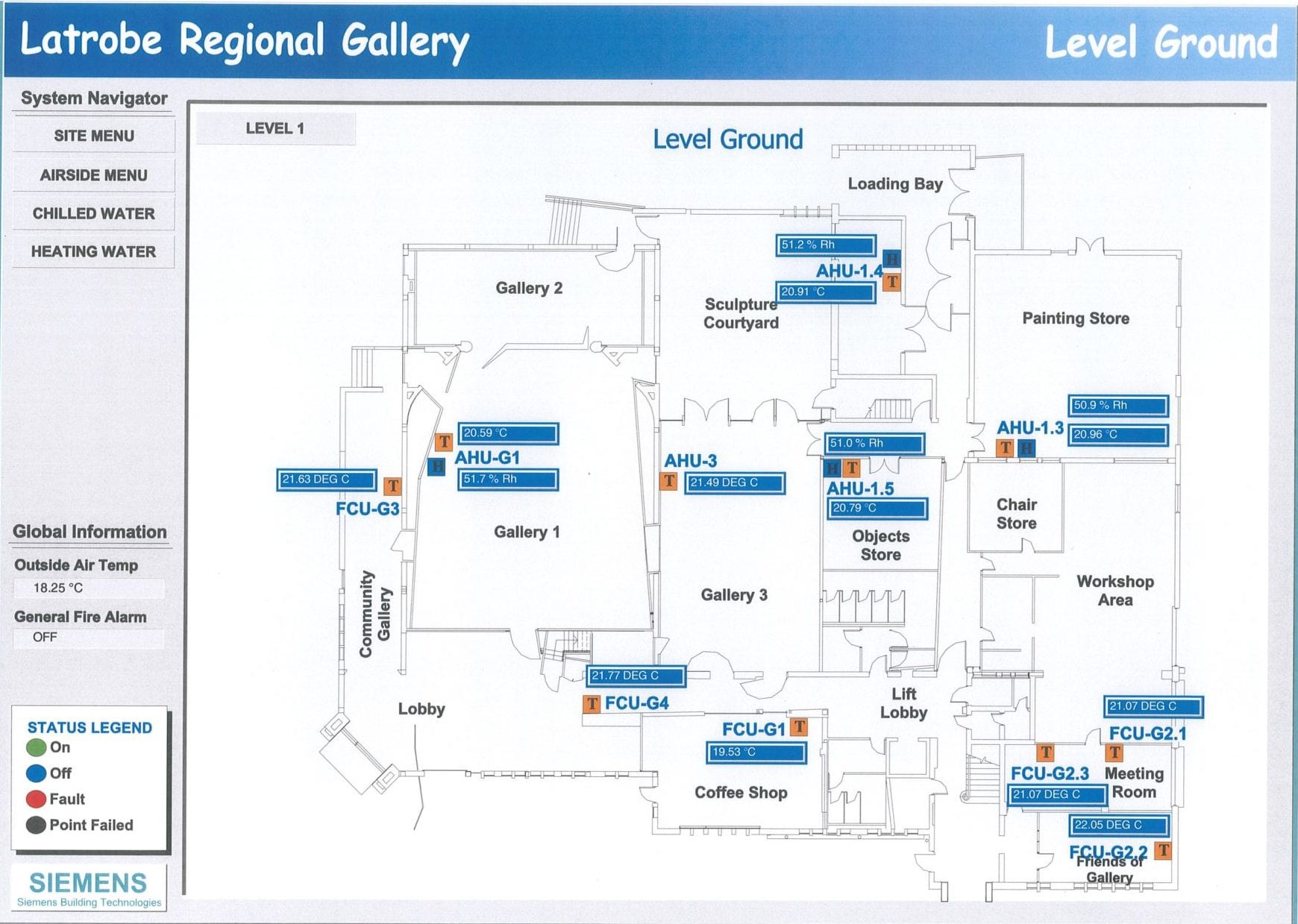
Image credit: Digital climate control system, Ground Level. Latrobe Regional Gallery.
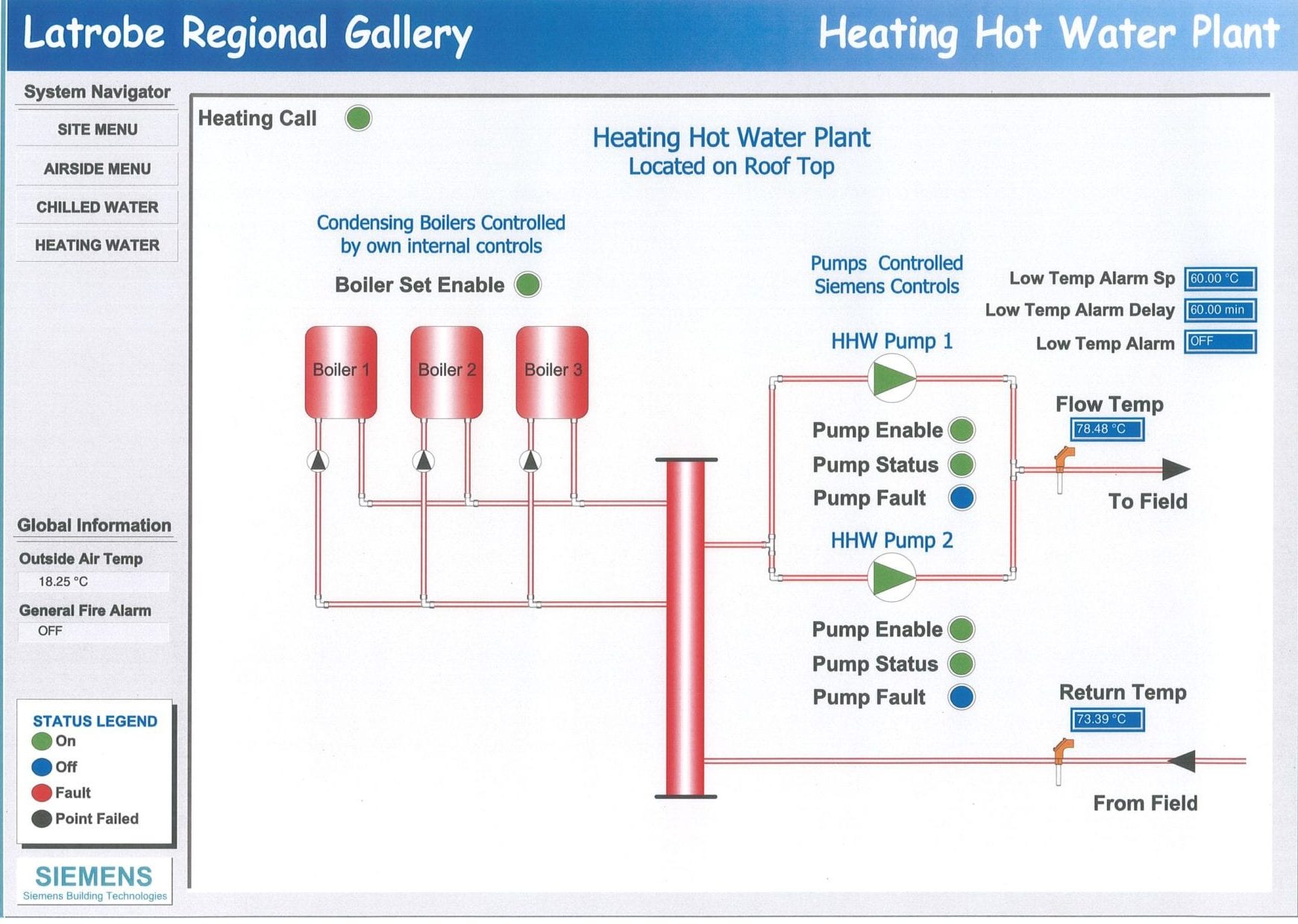
Image credit: Digital climate control system, Heating. Latrobe Regional Gallery.
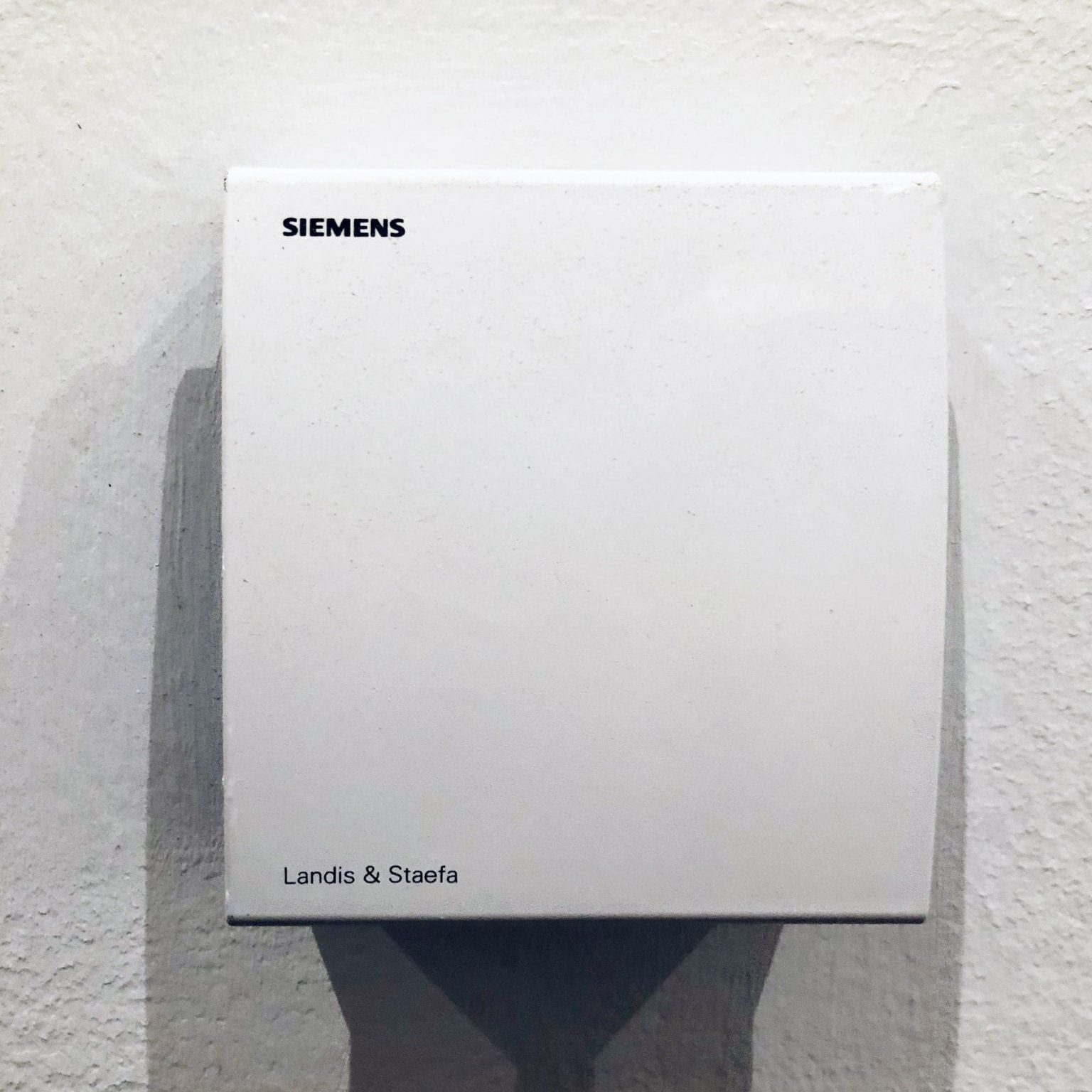
Image credit: Climate control sensor. Latrobe Regional Gallery.
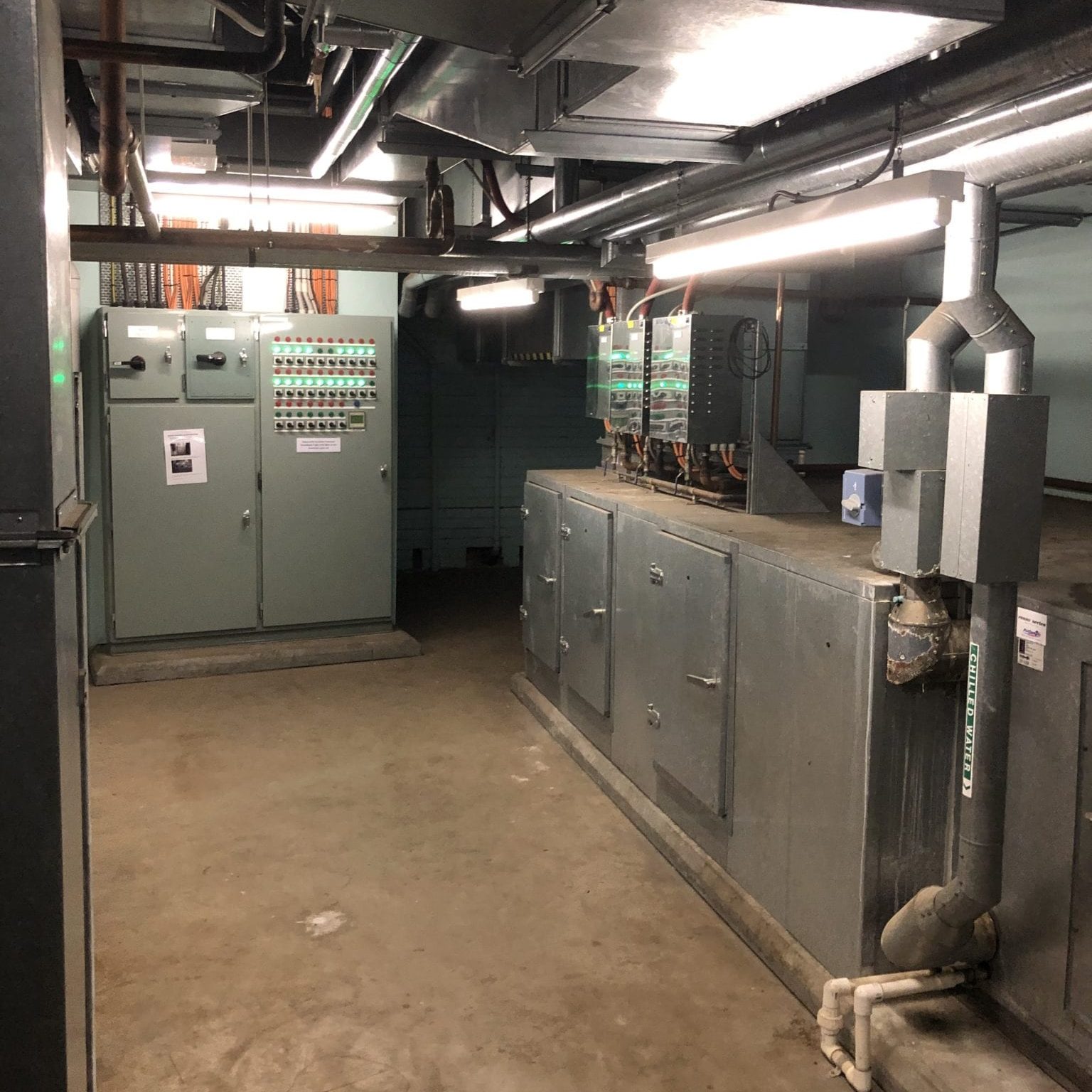
Image credit: Boiler room. Latrobe Regional Gallery.
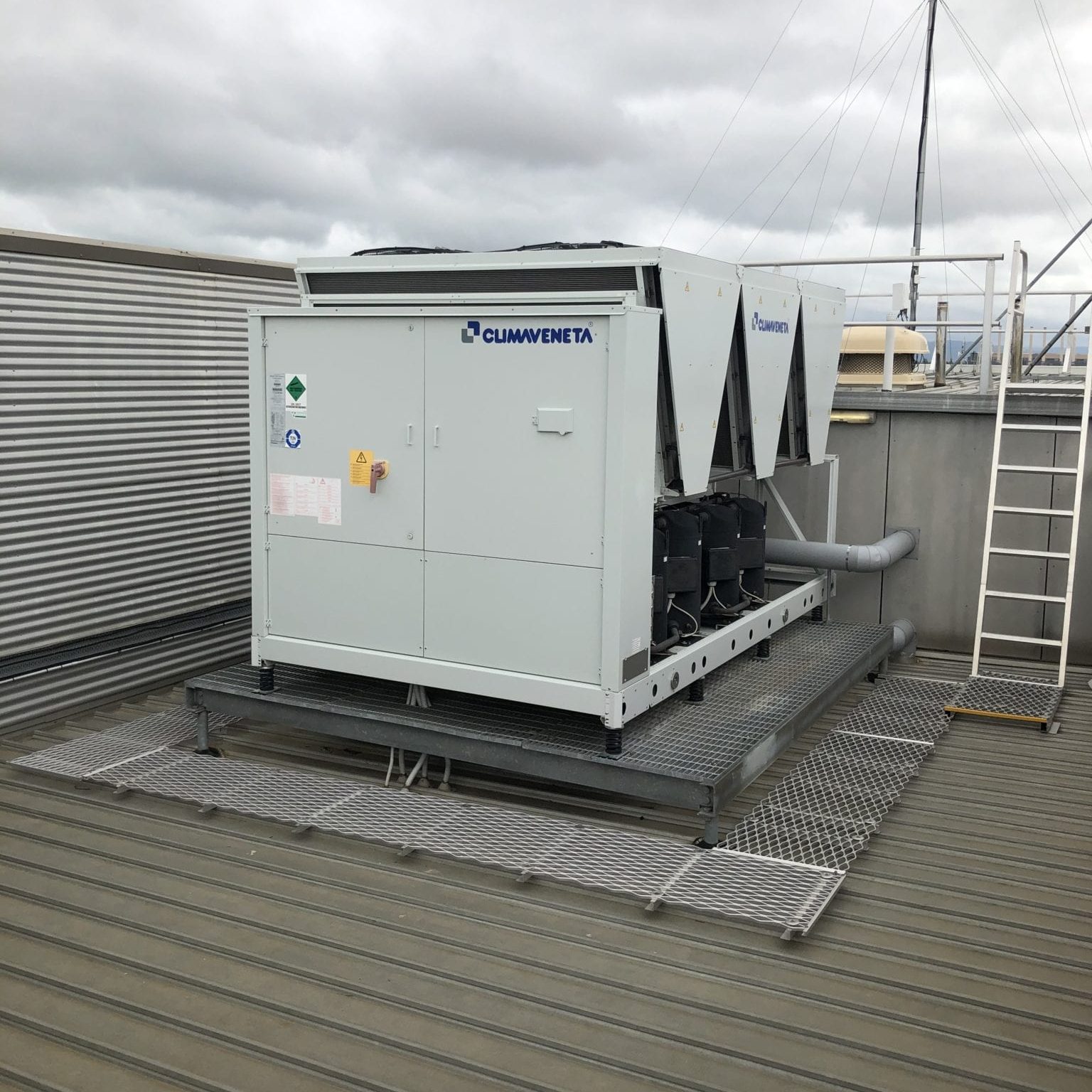
Image credit: Roof top air conditioning unit. Latrobe Regional Gallery.
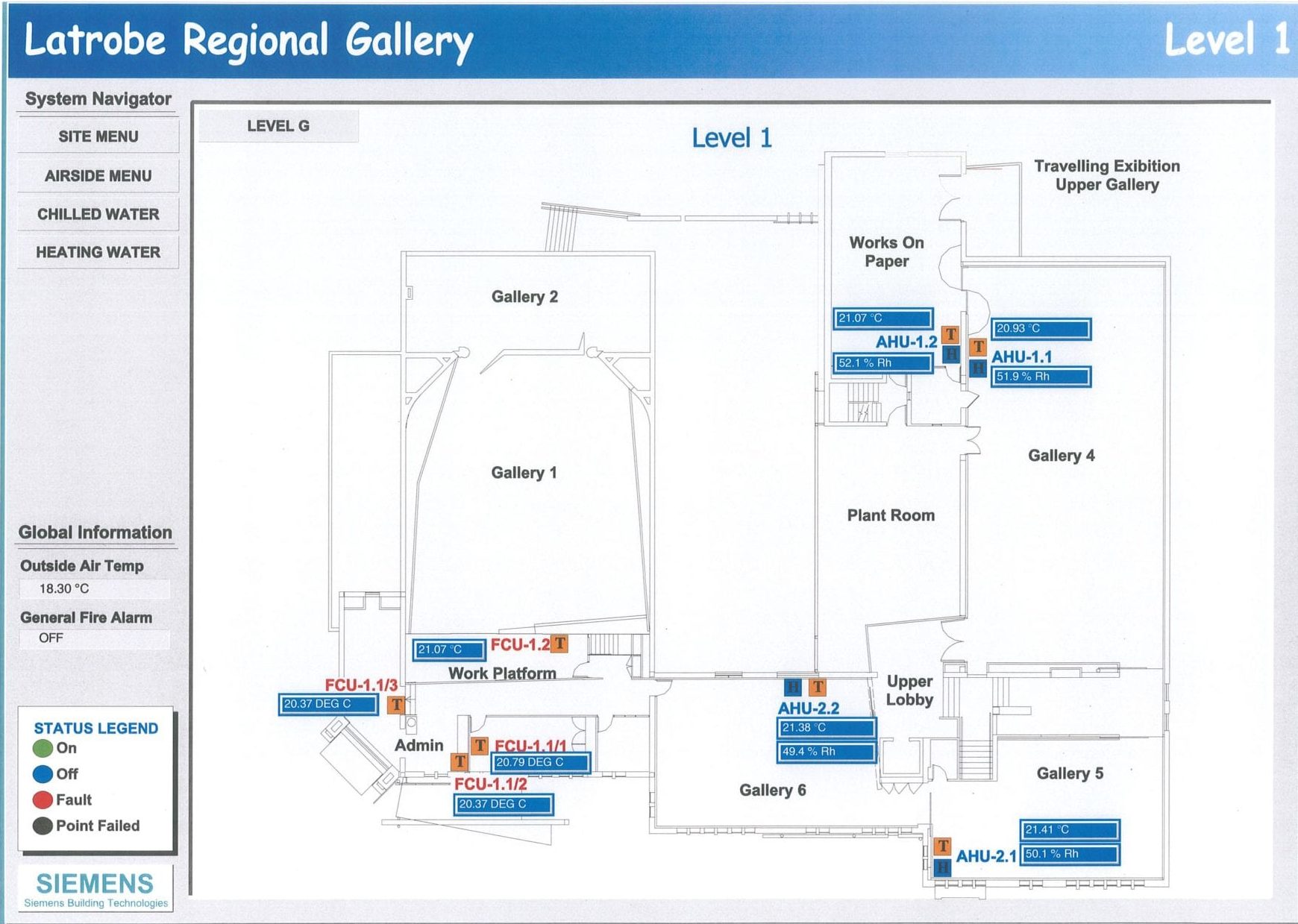
Image credit: Digital climate control system, Level 1. Latrobe Regional Gallery.
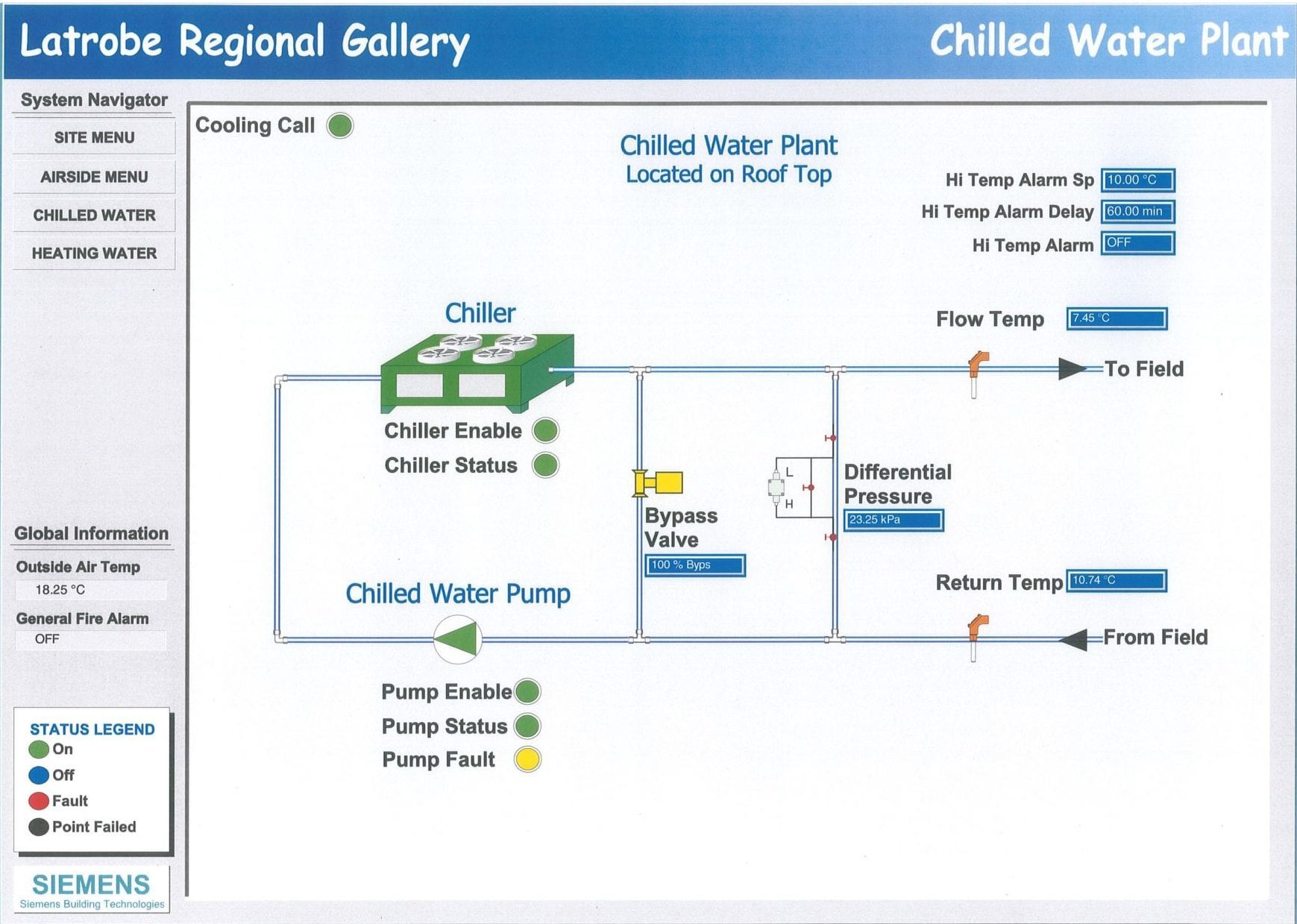
Image credit: Digital climate control system, Cooling. Latrobe Regional Gallery.
LRG EDUCATION
Preventative Conservation: Temperature and Humidity
VCE Studio Arts Unit 4 Area of Study 3: Art industry contexts
RELATIVE HUMIDITY
Relative humidity (RH) refers to the moisture content in the air relative to the maximum amount of moisture that air at that particular temperature can hold, which is expressed as a percentage (%RH).
ReCollections recommend that the RH levels for the safe-keeping of collections in galleries is:
50% ± 5%;. This is a compromise which has been arrived at by assessing the average requirement of an average collection in an average climate.
It is almost impossible to achieve a constant relative humidity of 50%; so a margin of 5 per cent either side of this has been permitted, that is, between 45% and 55%. The danger zones for relative humidity are over 65%, when mould grows and metal corrosion is common; and below 35%, when some materials dry out and become brittle.
Latrobe Regional Gallery (LRG) is kept at a constant 50%RH, with a fluctuation of ±5%. This allows a 10% buffer zone before the 65% level.
TEMPERATURE
Temperature is also important to maintain, although not as vital as the RH, it is important to note that the most important effect of temperature is the effect it has on altering RH levels. The recommended air temperature ‘set point’ for galleries and museums should be between 15-25°C. With a fluctuation of ±2°C, and LRG maintains a set point of 20°C (±2°).
High temperature can cause increased biological activity, many insects and moulds thrive and reproduce readily in warmer conditions, as well as an acceleration of chemical deterioration processes. Temperature affects the rate at which chemical reactions take place, for example, a temperature rise of 10ºC may double the rate of some degradation reactions, and this worsens if light, water or pollution also contribute to these chemical reactions.
FLUCTUATIONS IN TEMPERATURE AND HUMIDITY
Consistency of temperature and humidity is crucial in both display and storage areas, as extreme and or rapid fluctuations of temperature and RH are potentially more damaging than constant extremes. This can cause an increased risk of physical damage, shrinking, warping, distortion, cracking, splitting, chemical deterioration, bowing, cockling, foxing, swelling, corrosion, and insect or mould attack. This can be particularly hazardous for objects made of composite materials which expand and contract at different rates; and some types of plastic.
According to ReCollections, extremes and fluctuations in RH and temperature can be caused by:
- The regional climate;
- The climate within buildings;
- Localised climates with buildings;
- Microclimates; and
- Visitors.
Australia is a large country with three very different climates—tropical, arid and temperate. Regional climates are particularly significant for objects which are displayed outside.
The effect visitors have on the local climate depends on:
- How many visitors there are and whether they arrive individually or in groups;
- Whether they have wet or damp umbrellas and coats;
- How long they stay; and
- Their ages—school groups are potentially more disruptive to a controlled environment than adult tour groups or individuals.
The most other risk for extreme fluctuations in temperature or humidity at LRG could occur when objects are moved from storage boxes to open display or transporting and loaning collection artworks from one region of the country to another. When LRG loan works from galleries with different climates, the works are left in the transport crates, usually in the storage areas, to gradually adjust to the conditions of the gallery for at least 24 hours.
LRG controls the buildings climate with architectural design, using doorways and spaces in the building that act as buffers or air locks to external climates, including a motion-activated glass door at the entrance to the gallery and the cafe.
CLIMATE CONTROL
LRG’s building is equipped with a plant room for chillers and a boiler room which are connected to a digital climate control system which monitors the temperature and RH of gallery and storage spaces 24 hours, seven days a week. When fluctuations to temperature and RH occur, the system will automatically detect these changes and adjust accordingly.
Temperature and RH readings are digitally checked daily in order to accurately monitor the gallery and ensure that LRG are protecting the works. Often when LRG loan works from major galleries or renowned artists, 12-24 months of climate data is required to prove that the gallery can maintain atmospheric control so as not to harm the art in our charge.
The system will detect any faults, and where in the building it has occurred. The fault can then be reported to Latrobe City Council’s Building Maintenance Officer who will notify a specialist contractor so that adjustments or repairs can occur.
LRG’s Technician also physically monitors the system at the gallery at least once per day. The boiler room, plant room and rooftop cooling towers are all inspected for leaks, variables in gauges and alarm lights. It is rare that the system fails but it is paramount to be able to arrest any failure in the system before it can affect the art housed within the building.
REFERENCES
http://culturalmaterials.net/
http://www.icom-cc.org/
https://aiccm.org.au/
https://latroberegionalgallery.com/
Latrobe Regional Gallery's Education and Public Programs are generously supported by Opal.
